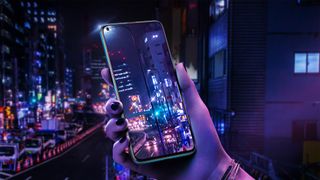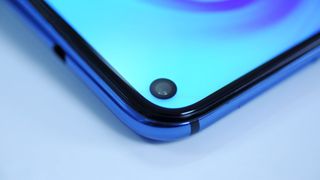
Even though it’s barely been a couple of years, any new phone with bezels looks like its decades old. Recent advancements in screen technology have allowed us to shrink bezels into notches and now, notches into a punch hole as seen on Huawei’s latest FullView display present on the Nova 4.
But where has all the technology that resided in a bezel or a notch disappeared? And how is it even possible to place a camera under the LCD panel? Those are some of the questions we’re going to be answering today by taking a look at the technology advancements Huawei has made with the Nova 4.

Huawei has placed the camera on the top-left side of the Nova 4. The reason Huawei chose this location was following its extensive research on where users usually tap or swipe on the screen. For a right-handed user, the top-left corner is the least accessed area on the screen and thus it made perfect sense to place the camera in that position
Unlike other manufacturers trying to implement this technology by drilling a hole on the LCD panel (known as through hole), Huawei places the camera module behind the LCD panel which preserves the screen integrity and creates a smaller hold diameter. Whereas other manufactures have a hold that’s 6.5mm I diameter, the Nova 4 has a tiny 4.5mm hole with the smallest front camera in the industry.
Where have all the sensors gone?
With the camera sorted, the next question to ask is where have all the additional components and sensors that have traditionally resided on the bezel and then on the notch gone? Huawei has made some very clever engineering decisions to tackle that.
Let’s start with the proximity sensor that generally resides on top of the screen and is responsible for turning the screen off when you place it next to your ear so you don’t tap anything onscreen when on a call. Using a light bending design, Huawei has placed the proximity sensor on the top of the phone thus making it aware when you place it next to your ear.
The next sensor that Huawei has tackled is the Ambient light sensor which is now so tiny that Huawei has aptly referred it to as the invisible light sensor. And finally, the last piece of the puzzle is the earpiece which Huawei has shrunk to a miniscule 0.85mm. This makes the micro slot earpiece fit inside the frame of the phone. And yes, Huawei has managed to insert a tri-color LED indicator in that earpiece.
Get daily insight, inspiration and deals in your inbox
Get the hottest deals available in your inbox plus news, reviews, opinion, analysis and more from the TechRadar team.
What’s extremely impressive is that Huawei has built all this technology around its mid-range Nova range while other manufacturers are introducing the punch hole technology on their flagship devices.
Most Popular

